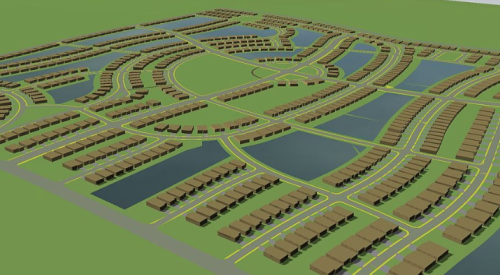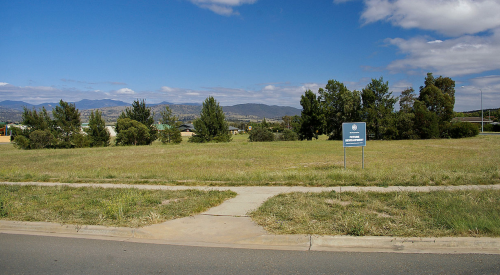| Wayne Colmer Photo by Mark Robert Halper |
Project: Morro Cove, Morro Bay, Calif.
Builder-developer: Wayne Colmer, Colmer Development Co., Calabasas, Calif.
Project size: 4.5 acres on a bluff overlooking the Pacific Ocean
Proposed development: Build a 30-unit, move-up and empty-nester community themed with Mediterranean architecture.
Landowner: A family trust owned the site for more than 40 years.
Site considerations: The California Coastal Commission writes long-term plans for all property running up and down the California coast. This site was designated for a hotel/convention center usage by the commission, but previous attempts by commercial developers had failed because of local opposition.
| Construction has begun on Morro Cove's models, which are set to start selling in the low-million-dollar range this fall. |
Deal story: A land broker first suggested that Colmer look at this unique property. His firm has developed and built approximately 600 homes in his 16 years as an independent builder/developer. The common thread: All the homes were built in communities where entitlements are tough to come by.
Although building on coastal sites is notoriously difficult, Colmer says he approached the landowner with a deal proposal because as a residential developer he immediately would have the backing of locals and officials who opposed commercial use.
Colmer says he took pains to explain to the family who owned the property what type of community he expected to build, paying particular attention to its quality design and construction. "It is important for us to meet the land sellers in person to get them to know who we are and the commitment we are willing to make to buy this property," he says. "We want to make sure he or she is making a long-term commitment to us and that he or she will wait until we do get the entitlements in case we need additional time."
The deal structure was simple:
In the end, Colmer calculated correctly that community support would push his project over the finish line. Morro Bay officials even volunteered to pitch Colmer's development plan to the California Coastal Commission on his behalf. The result was a unanimous re-zoning vote from that body.
Colmer's investments in the project were significant even though he did not need to buy the land outright. In addition to sweat equity, he and his investors laid out $450,000 to hire a range of consultants needed to secure the entitlements. At one point a butterfly expert was required at a cost of $12,000.
"We invested a lot of money in this project," Colmer says, "and there were no assurances I would get entitlements. It was very risky. That's why the seller was willing to sell the property under those terms. As it turned out, the market during those five years appreciated way beyond anybody's expectation."












